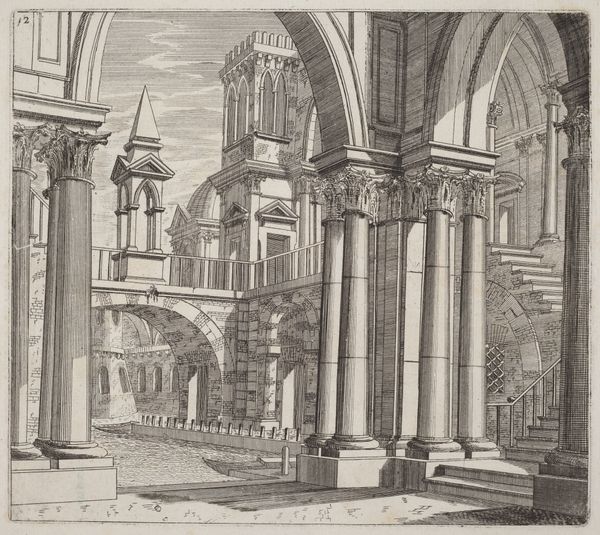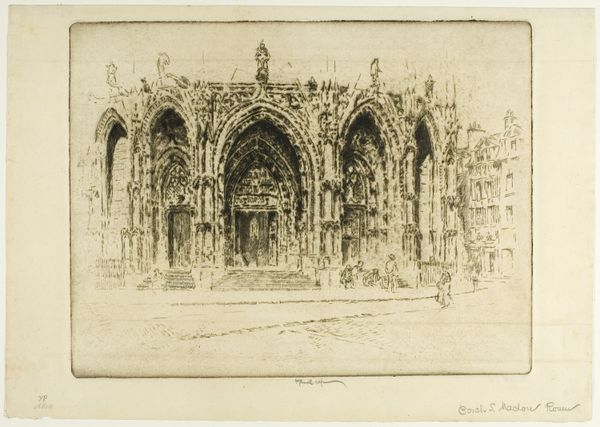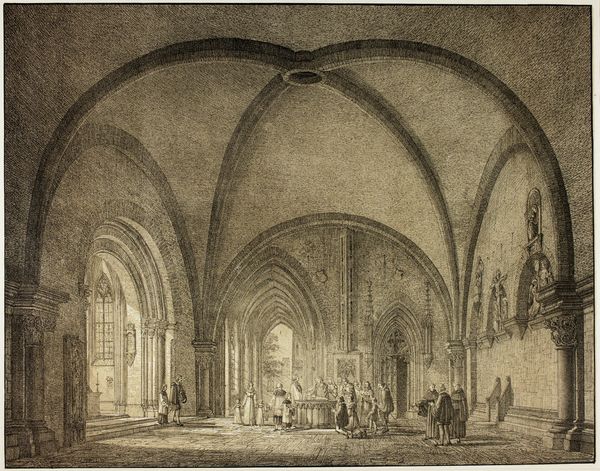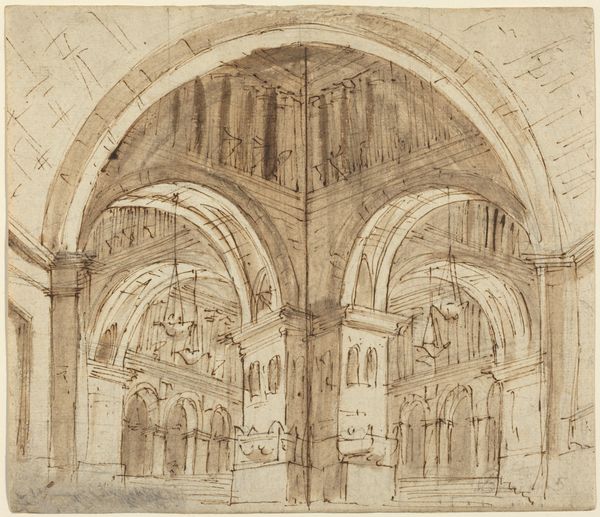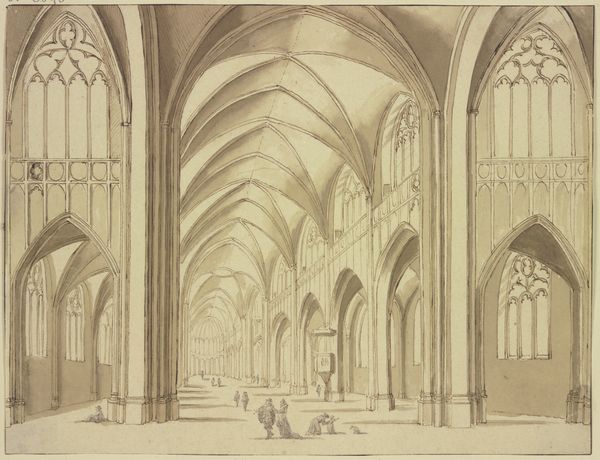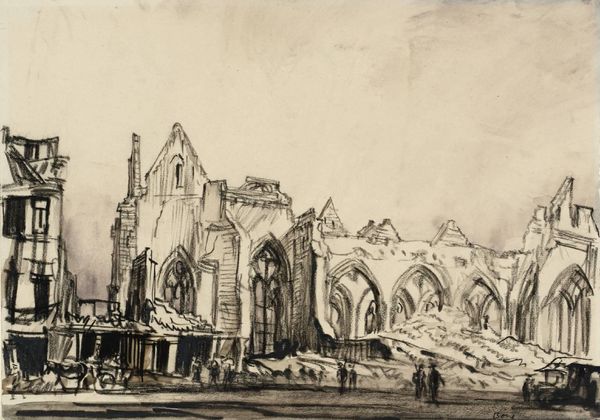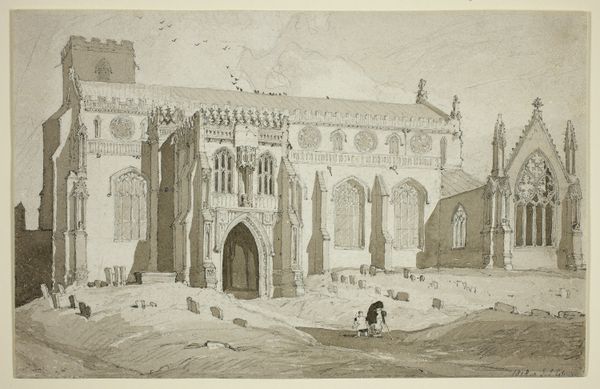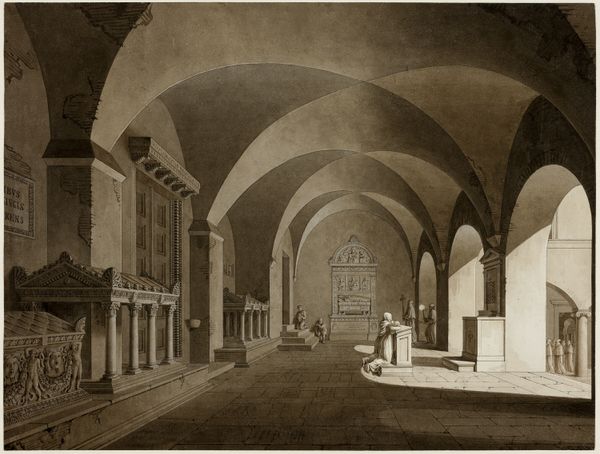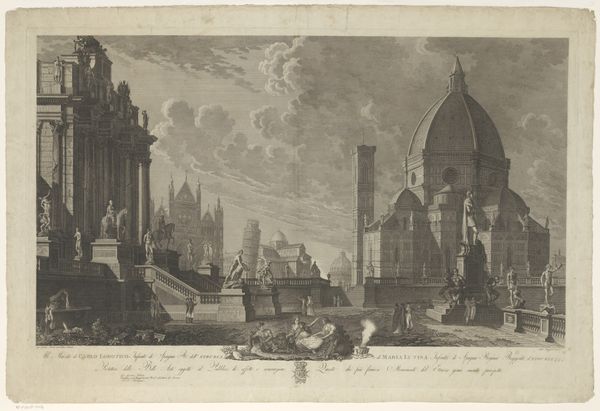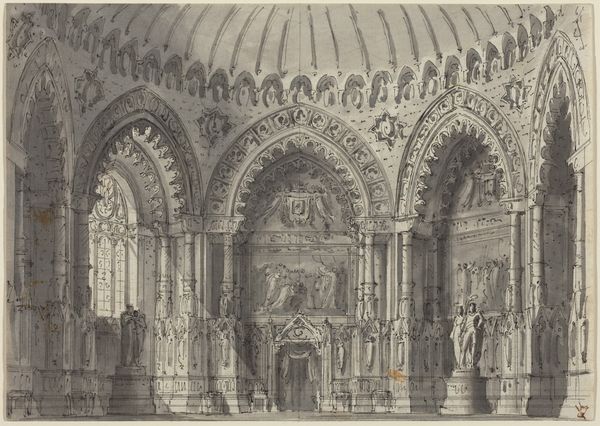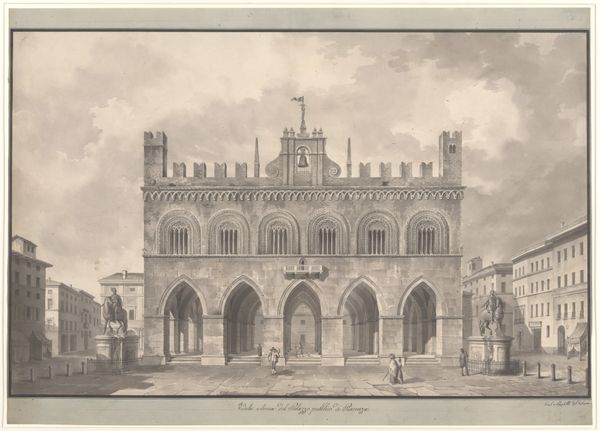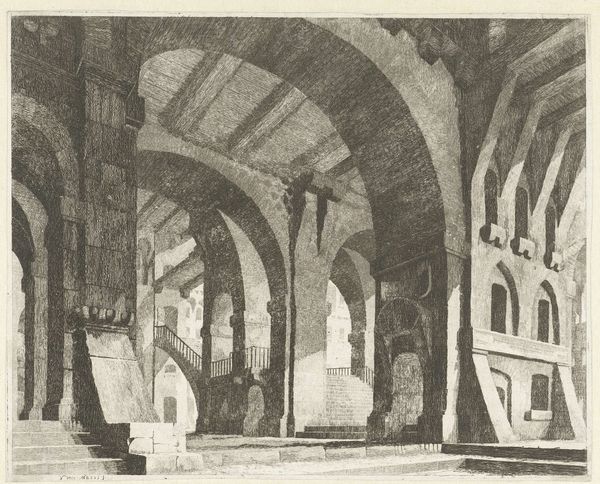
Graveyard of the Ravenswoods, from "Lucia di Lammermoor" 1868
0:00
0:00
Dimensions: overall: 24.9 x 40.9 cm (9 13/16 x 16 1/8 in.)
Copyright: National Gallery of Art: CC0 1.0
Curator: "Graveyard of the Ravenswoods, from "Lucia di Lammermoor,"" created in 1868 by Romolo Liverani using ink on drawing, welcomes us into its shadowy depths. What catches your eye initially? Editor: Oh, it’s deliciously bleak, isn't it? The contrast of light and dark feels almost…theatrical, if that makes sense. Like the set design for a really tragic play, all arches and brooding atmosphere. Curator: It’s precisely that theatrical sensibility that Liverani, a renowned stage designer, captures. The piece likely served as a design concept for the opera's stage setting. Observe how architectural features – arches and pillars – create layers that pull us into the scene's depths. Editor: And the graveyard itself seems less like a peaceful resting place and more like some kind of gothic fortress, doesn't it? Like the whole place is holding its breath, anticipating something…terrible. Is that romanticism, or just my overactive imagination? Curator: A bit of both, perhaps. Romanticism embraced the sublime, a potent mix of awe and terror. Death and ruin became symbolic emblems in the Romantic vision, resonating with humanity's fragile place in the face of overwhelming nature and time. That sense of looming dread, beautifully evoked by the ink's monochrome palette, connects directly to the opera's tragic narrative. Editor: Monochrome definitely intensifies the melancholy. It's a world without color, reflecting a world without hope, you know? The detailing around those tombs, the almost excessive ornamentation… it's as if death is something to be celebrated and feared in equal measure. And the artist managed to get that complexity through a pretty simple set of supplies: pen and ink. I find that contrast rather powerful. Curator: The use of ink wash creates depth and texture. There is an incredible balance achieved between precision and suggestion. Notice the details on the tombs and monuments against the slightly blurred horizon. Liverani's background as a scenographer likely informed his ability to capture a complex scene using economy and efficiency. Editor: It reminds me of those Victorian "memento mori" photographs, attempts to grasp the ephemeral quality of existence through art. There's such a stillness to the drawing, too. Almost a preternatural hush about the landscape that further intensifies the emotion. Curator: Yes, the Romantics were rather keen on exploring such dark sentiments. In some ways, viewing this artwork can teach us about processing and expressing our shared cultural anxieties regarding mortality. It serves as a touchstone across time. Editor: Absolutely. I think I might have just found my new go-to illustration for when I am feeling the need for a good, old-fashioned dose of beautiful despair. Thanks, Liverani!
Comments
No comments
Be the first to comment and join the conversation on the ultimate creative platform.
